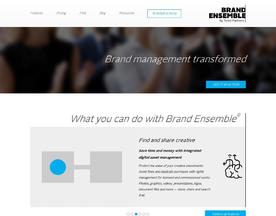How to create memorable clothing brand name ideas? Combine uniqueness with relevance, add a touch of your brand’s essence, ensure it’s easy to spell and remember, and do a trademark check.
Clothing brands are a dime a dozen. With so many options out there, it can be difficult for a new clothing brand to stand out from the crowd. One of the most important aspects of a clothing brand is its name. A good name can make all the difference in attracting customers and building brand recognition. But how do you come up with a great name for your clothing brand?

Understanding your brand identity is the first step in coming up with clothing brand name ideas. Your brand identity is the unique personality and values that your brand represents. It’s important to have a clear understanding of your brand identity before you start brainstorming names. This will help you come up with a name that accurately reflects your brand and resonates with your target audience.
Key Takeaways
- Understanding your brand identity is crucial in coming up with a clothing brand name
- Brainstorming is an important step in the process of creating a clothing brand name
- Analyzing the competition and validating your brand name can help ensure its success
Understanding Brand Identity

Creating a successful clothing brand requires a strong brand identity. A brand identity is the combination of visual and emotional elements that define a brand, including its name, style, personality, and trademark. In this section, we will explore the importance of a memorable name, brand personality and style, and brand recognition and trademark.
The Importance of a Memorable Name
A memorable name is crucial to a clothing brand’s success. It should be unique, easy to remember, and reflect the brand’s personality and style. A good name can help a brand stand out in a crowded market and make it easier for customers to remember and recommend to others. According to Forbes, a memorable name can also increase brand recognition and help build brand loyalty.
Brand Personality and Style
A clothing brand’s personality and style are essential components of its brand identity. The brand’s personality should reflect its values, mission, and target audience. The style should be consistent across all aspects of the brand, including the name, logo, packaging, and marketing materials. A strong brand personality and style can help a brand connect with its target audience and stand out in a competitive market.
Brand Recognition and Trademark
Brand recognition is the ability of customers to identify a brand by its name, logo, or other visual elements. A trademark is a legal protection for a brand’s name, logo, or other unique elements. Trademarks can help protect a brand’s identity and prevent others from using similar names or logos. According to Entrepreneur, registering a trademark can also increase a brand’s value and make it more attractive to investors.
In summary, a clothing brand’s success depends on a strong brand identity. A memorable name, brand personality and style, and brand recognition and trademark are all essential components of a successful brand identity. By creating a brand identity that reflects its values and resonates with its target audience, a clothing brand can stand out in a competitive market and build a loyal customer base.
Brainstorming Your Brand Name
When starting a clothing brand, choosing a catchy and memorable name is crucial for success. A well-thought-out name can help your business stand out in a crowded market and attract your target audience. Here are some tips for brainstorming your brand name:
Utilizing Business Name Generators
Business name generators can be a useful tool for generating unique and creative name ideas. These online tools allow you to enter keywords related to your business, such as fashion or clothing, and generate a list of potential names. Some popular business name generators include Shopify’s Business Name Generator and Namelix.
While business name generators can be a helpful starting point, it’s important to keep in mind that the generated names may not always be suitable for your brand. It’s essential to evaluate each name carefully and ensure that it aligns with your brand’s values, target audience, and overall vision.
Incorporating Fashion and Clothing Terms
Incorporating fashion and clothing terms into your brand name can help convey the nature of your business and attract your target audience. For example, using words like “couture,” “chic,” or “style” can create a sense of sophistication and elegance.
However, it’s important to avoid using generic terms that are overused in the industry, such as “fashion” or “clothing.” Instead, try to be more creative and unique in your naming approach.
Reflecting Your Target Audience
Your brand name should also reflect your target audience and the type of clothing you offer. For example, if you’re targeting a younger demographic, you may want to choose a name that’s more playful and trendy. On the other hand, if your brand is geared towards a more mature audience, you may want to choose a name that’s more sophisticated and timeless.
It’s also essential to consider the cultural and social implications of your brand name. Avoid using names that may be offensive or insensitive to certain groups of people.
In conclusion, brainstorming a brand name requires creativity, research, and careful consideration. By utilizing business name generators, incorporating fashion and clothing terms, and reflecting your target audience, you can create a memorable and effective name for your clothing brand.
Here is a helpful resource for more fashion business name ideas.
Analyzing the Competition
When it comes to creating a clothing brand, analyzing the competition is an essential step to take. By understanding what other clothing brands are doing, you can learn from their successes and mistakes, identify market gaps, and develop a unique selling proposition.
Learning from Established Brands
One of the best ways to analyze the competition is to study established clothing brands. Nike, Supreme, Louis Vuitton, Chanel, Hermès, and Zara are just a few examples of brands that have made a name for themselves in the fashion industry.
By analyzing these brands, you can learn about their target audience, marketing strategies, and unique selling propositions. For example, Nike’s “Just Do It” slogan and iconic swoosh logo have helped the brand become synonymous with athleticism and performance. Supreme, on the other hand, has built a cult following by releasing limited-edition collections and collaborating with popular artists and designers.
Identifying Market Gaps
Another way to analyze the competition is to identify market gaps. These are areas where there is a demand for a certain type of clothing, but no brand is currently meeting that demand.
For example, if there is a lack of sustainable and eco-friendly clothing options in the market, a clothing brand could focus on creating clothing made from recycled materials or organic cotton. By identifying and filling market gaps, a clothing brand can differentiate itself from the competition and attract a loyal customer base.
To learn more about analyzing the competition and identifying market gaps, check out this article from Forbes, which provides additional insights and tips for creating a successful clothing brand.
Validating Your Brand Name

Before finalizing a brand name, it is essential to ensure that it is unique, available, and resonates with the target audience. Here are two crucial steps to validate your brand name:
Checking Domain and Trademark Availability
The first step in validating a brand name is to check the domain and trademark availability. A domain name is the online address of your brand, and a trademark is a legal protection of your brand name. It is crucial to ensure that both are available before finalizing a brand name to avoid legal issues and confusion.
To check domain availability, one can use domain name registrars like GoDaddy or Namecheap. These websites allow users to search for the availability of a domain name and provide alternative suggestions if the desired name is unavailable. It is also essential to check if the domain name has a history of spam or negative SEO, as it can affect the brand’s online reputation.
To check trademark availability, one can use the United States Patent and Trademark Office (USPTO) website. The USPTO website provides a searchable database of registered trademarks and pending trademark applications. It is crucial to ensure that the brand name is not already trademarked, as it can lead to legal disputes and expenses.
Gathering Feedback from Potential Customers
The second step in validating a brand name is to gather feedback from potential customers. Feedback can help determine if the brand name resonates with the target audience and if it is memorable and easy to pronounce.
One way to gather feedback is to conduct surveys or focus groups. Surveys can be conducted online using survey tools like SurveyMonkey or Google Forms. Focus groups can be conducted in person or online using video conferencing tools like Zoom or Skype.
Another way to gather feedback is to use social media platforms like Facebook or Twitter. Social media platforms allow brands to interact with potential customers directly and gather feedback on brand names. It is essential to use social media platforms that the target audience uses to ensure accurate feedback.
In conclusion, validating a brand name is crucial to ensure that it is unique, available, and resonates with the target audience. Checking domain and trademark availability and gathering feedback from potential customers are two crucial steps in validating a brand name. By following these steps, brands can avoid legal issues and ensure that their brand name is memorable and resonates with their target audience.
Creating a Visual Identity

Creating a visual identity is an essential step in establishing a successful clothing brand. It involves designing a logo that represents your brand and choosing a theme for your clothing line. A well-designed logo and theme can help your brand stand out and attract customers.
Designing a Logo that Represents Your Brand
A logo is the face of your brand and should be designed carefully to represent your brand’s message and values. It should be simple, memorable, and recognizable. When designing a logo, it’s important to consider the colors, fonts, and symbols that will be used.
To create a logo that represents your brand, you can hire a professional designer or use a free logo maker tool available online. A professional designer can help you create a unique and custom logo that reflects your brand’s identity. On the other hand, free logo maker tools can be a cost-effective option for small businesses with limited budgets.
Choosing a Theme for Your Clothing Line
Choosing a theme for your clothing line is another crucial step in creating a visual identity for your brand. Your theme should be unique and reflect your brand’s personality. It can be inspired by your brand’s story, values, or target audience.
When choosing a theme, it’s important to consider the colors, patterns, and styles that will be used in your clothing line. You can also use your theme to create a cohesive look across your website, social media, and other branding materials.
To get inspiration for your clothing line theme, you can research other successful clothing brands and see what themes they have used. You can also browse through fashion magazines and websites for ideas.
Overall, creating a visual identity for your clothing brand is an important step in establishing a successful business. By designing a logo that represents your brand and choosing a unique theme for your clothing line, you can attract customers and stand out in the competitive fashion industry. For more information on creating a successful visual identity for your brand, check out this guide.
Marketing and SEO Strategies

Building an Online Presence
For a fashion brand or clothing company, building an online presence is crucial in today’s digital age. Creating an online shop is one of the most effective ways to reach a wider audience and increase sales. Social media platforms such as Instagram, Facebook, and Twitter can also be used to showcase products and connect with customers.
To establish a strong online presence, it is important to have a professional website that reflects the brand’s image and values. A well-designed website with high-quality images and easy navigation can help attract and retain customers. Additionally, having a blog section on the website can help drive traffic and increase engagement.
Optimizing for Search Engines
Search engine optimization (SEO) is the process of improving the visibility of a website or online shop in online search results. Optimizing a website for search engines can help increase organic traffic and improve the brand’s online presence.
One of the most important aspects of SEO is selecting the right domain name. The domain name should be relevant to the brand and easy to remember. It is also important to include relevant keywords in the website’s content, meta tags, and descriptions.
Another effective SEO strategy is creating high-quality content that is relevant to the target audience. This can include blog posts, product descriptions, and how-to guides. Creating backlinks to the website from high-authority websites can also help improve search engine rankings.
In conclusion, building an online presence and optimizing for search engines are crucial strategies for any fashion brand or clothing company looking to increase sales and reach a wider audience. By following these strategies, brands can establish a strong online presence and improve their visibility in online search results. For more information on SEO strategies, check out this [link to an external resource with high authority on SEO].
Launching Your Clothing Brand

Launching a clothing brand can be an exciting and challenging experience. It requires a lot of hard work, dedication, and creativity. In this section, we will discuss some key factors to consider when launching your clothing brand.
Setting Up Your Clothing Store
One of the first things you need to consider when launching a clothing brand is setting up your clothing store. You can either choose to set up a physical store or an online store, or both. If you decide to set up a physical store, you need to find a location that is easily accessible and has high foot traffic. You also need to consider the cost of rent, utilities, and other expenses that come with running a physical store.
On the other hand, setting up an online store can be a more cost-effective option. You can use platforms like Shopify or WooCommerce to set up your online store. You need to ensure that your online store is user-friendly and has a secure payment gateway. You also need to optimize your online store for search engines to ensure that your target audience can easily find your products.
Developing a Product Line
Developing a product line is another important factor to consider when launching your clothing brand. You need to decide on the type of clothing you want to sell, whether it’s trendy, classic, streetwear, denim, plus size, men’s clothing, t-shirts, or any other type of clothing. You also need to ensure that your product line is unique and stands out from your competitors.
To develop your product line, you need to conduct market research to understand your target audience’s preferences and needs. You can also get inspiration from fashion trends and other successful clothing brands. Once you have developed your product line, you need to ensure that your products are of high quality and reasonably priced.
In conclusion, launching a clothing brand requires careful planning and execution. By setting up your clothing store and developing a unique product line, you can establish a successful clothing brand. For more information on launching a clothing brand, check out this article by Forbes.
Expanding Your Brand Reach

Expanding your brand reach is essential for any clothing brand to stay relevant in the ever-changing fashion industry. In this section, we will discuss two key strategies to help you expand your brand reach: engaging with fashion communities and collaborating with fashion influencers.
Engaging with Fashion Communities
Engaging with fashion communities is a great way to create brand awareness and build a loyal customer base. Fashion communities can be online or offline and can include fashion bloggers, fashionista forums, and social media groups.
To engage with fashion communities, clothing brands can participate in discussions, share their latest collections, and offer exclusive discounts to members. This will help build a strong brand presence within the community and attract potential customers.
One great online fashion community is the Fashion Spot. It is a platform where fashion enthusiasts and industry professionals come together to discuss the latest trends and news in the fashion industry. By participating in the Fashion Spot’s forum, clothing brands can connect with their target customers and gain valuable insights into their preferences and needs.
Collaborating with Fashion Influencers
Collaborating with fashion influencers is another effective way to expand your brand reach. Fashion influencers are individuals with a large following on social media who have the power to influence their followers’ purchasing decisions.
Clothing brands can collaborate with fashion influencers by sending them free products to review or paying them to promote their products on their social media channels. This can help increase brand visibility and attract new customers.
One great example of a successful collaboration between a clothing brand and a fashion influencer is the partnership between Adidas and Kylie Jenner. Adidas sent Kylie free products to promote on her Instagram page, which has over 200 million followers. This partnership helped Adidas reach a wider audience and increase brand awareness.
In conclusion, engaging with fashion communities and collaborating with fashion influencers are two effective strategies for expanding your clothing brand’s reach. By implementing these strategies, clothing brands can increase brand visibility, attract new customers, and stay ahead of the competition in the fashion industry.
Additional Considerations
When it comes to choosing a name for your clothing brand, there are a few additional considerations to keep in mind. These include dealing with legal aspects and conducting market research.
Dealing with Legal Aspects
Before settling on a name, it’s important to ensure that it’s legally available. This means conducting a trademark search to make sure that the name isn’t already in use or too similar to an existing brand. This can be done through the United States Patent and Trademark Office (USPTO) website or by hiring a trademark attorney.
It’s also important to consider the domain name availability for the brand name. Having a website with the same name as your brand can help with brand recognition and online visibility. However, if the domain name is already taken, it may be difficult to establish a strong online presence. Therefore, it’s advisable to check the domain name availability before finalizing the brand name.
Conducting Market Research
Market research is crucial for understanding the target audience and competition. This involves analyzing the market trends, consumer behavior, and preferences. It can also help to identify the gaps in the market that the brand can fill.
One effective way to conduct market research is through online surveys. This can provide valuable insights into the target audience’s preferences and opinions. Another option is to analyze social media platforms to see what people are talking about and what’s trending.
In addition, it’s important to consider the brand personality when choosing a name. The name should reflect the brand’s values and identity. This can help to establish a strong brand image and connect with the target audience.
Overall, choosing a name for a clothing brand requires careful consideration of legal aspects, market research, and brand personality. By taking these factors into account, the brand can establish a strong identity and stand out in a competitive market.
Here is a link to the USPTO website for conducting a trademark search.
Frequently Asked Questions

How do I choose a unique and memorable name for my clothing brand?
Choosing a unique and memorable name for your clothing brand is crucial for standing out in the crowded fashion industry. Some tips to consider include brainstorming keywords that relate to your brand’s aesthetic and values, researching your competitors’ names to avoid similarities, and testing the name with potential customers to gauge their reaction.
What are some tips for creating a luxury clothing brand name ideas that stands out?
If you’re looking to create a luxury clothing brand name that stands out, consider using words that evoke feelings of exclusivity, sophistication, and elegance. Avoid using generic words and instead opt for unique and creative combinations. Additionally, incorporating your brand’s story or inspiration into the name can add a personal touch.
Can you suggest some catchy fashion brand names that aren’t already taken?
Coming up with a catchy fashion brand name can be challenging, especially when so many names are already taken. However, some tips to consider include using puns or wordplay, incorporating cultural references or symbolism, and experimenting with different languages. A helpful resource for generating name ideas is a brand name generator tool, such as Namelix.
What are the best practices for incorporating numbers into a clothing brand name?
Incorporating numbers into a clothing brand name can add a unique touch and help it stand out. However, it’s essential to use numbers in a way that’s easy to remember and doesn’t confuse customers. Some best practices to consider include using numbers that relate to your brand’s story or values, using numbers in place of letters (such as “4” instead of “for”), and keeping the number short and simple.
How can I generate a creative name for my streetwear clothing line?
Generating a creative name for a streetwear clothing line requires a deep understanding of the streetwear culture and aesthetic. Some tips to consider include using slang or colloquial language, incorporating bold and edgy words, and experimenting with typography. It’s also helpful to research successful streetwear brands and analyze their naming strategies for inspiration.
What should I consider when naming my designer clothing brand to ensure it’s distinctive?
Naming a designer clothing brand requires careful consideration to ensure it’s distinctive and memorable. Some factors to consider include the brand’s aesthetic and values, the target audience, and the competition. Additionally, it’s crucial to choose a name that’s easy to pronounce and spell, as well as one that’s not too similar to other existing brands. A helpful resource for checking the availability of a brand name is the United States Patent and Trademark Office’s Trademark Electronic Search System (TESS).
For further reading on the topic of naming a clothing brand, check out this article from Forbes: How To Create A Memorable Name For Your Fashion Brand














